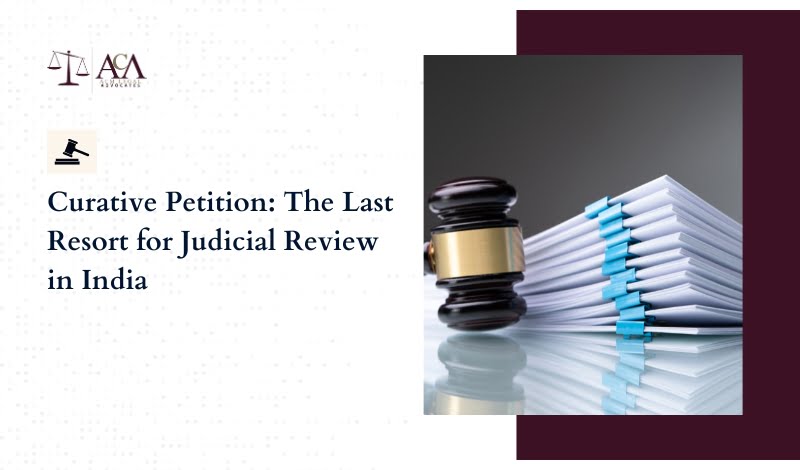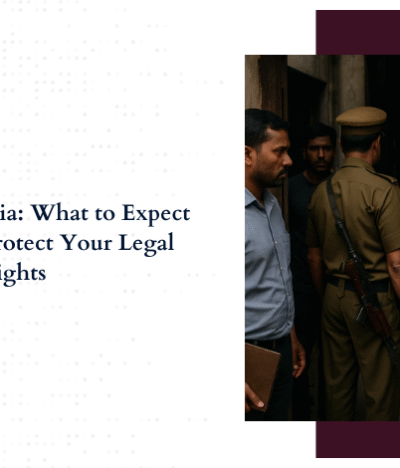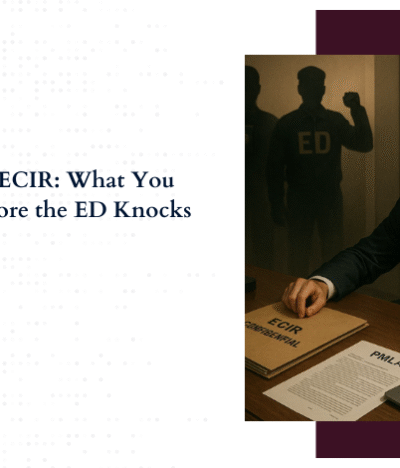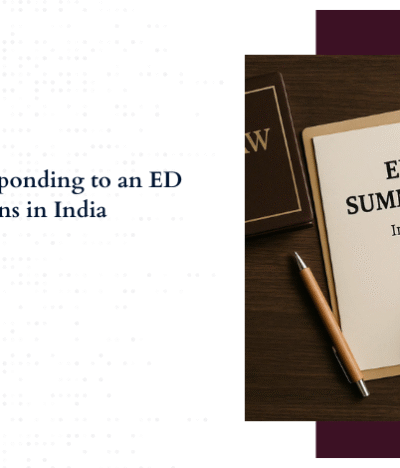A curative petition is a mechanism devised by the Supreme Court to reconsider its own decision made in a review petition. This legal tool allows any party wishing to challenge the review order to file a curative petition. Typically, the process in the Supreme Court begins with a petition challenging an order from the High Court (or equivalent). If this petition is denied, a review can be sought. However, in the rarest of rare cases, as a final measure, one may resort to a curative petition, provided certain conditions are met. It is important to note that not every litigant can approach the Supreme Court with a curative petition, as this option is employed very sparingly by the Court.
The authority of the curative petition represents an extraordinary jurisdiction instituted by the Supreme Court for its own purposes. This power is not derived from any legislation enacted by Parliament but is instead established by the Supreme Court through its inherent authority under Article 137 of the Constitution. The inception of the curative petition is intricately linked to the Supreme Court’s interpretation of the review petition, as delineated in Article 137 of the Constitution.
When Is The Option Of Curative Available?
There are two scenarios for a curative petition. First, if a review petition was dismissed by circulation, a curative petition can be entertained and must follow the standard procedure outlined below. Second, if the review petition was heard and dismissed in open court, a curative petition will generally not be entertained.
The standard procedure for a curative petition, in cases where the review was dismissed by circulation and not heard in open court, involves the petition being reviewed by the three most senior judges of the Supreme Court of India, including the Chief Justice of India, as well as the judges who dismissed the review petition, if they are available. If any or all of the judges who heard the review petition are unavailable due to retirement or other reasons, then only the three senior judges of the Court will hear the curative petition.
The Legal Evolution Of The Curative Petition
Rupa Ashok Hurra V Ashok Hurra (2002)
The case of Rupa Ashok Hurra marked the inception of the curative petition. The Supreme Court ruled that to prevent the abuse of its process and to correct gross injustices, it could reconsider its judgments by exercising its inherent powers under Article 137 of the Constitution. Paragraph 42 of the judgment stated:
“The concern of this Court for rendering justice in a cause is not less important than the principle of finality of its judgment. We are faced with competing principles – ensuring certainty and finality of a judgment of the Court of last resort and dispensing justice on reconsideration of a judgment on the ground that it is vitiated being in violation of the principle of natural justice or apprehension of bias due to a Judge who participated in decision making process not disclosing his links with a party to the case, or abuse of the process of the court. Such a judgment, far from ensuring finality, will always remain under the cloud of uncertainty…We are of the view that though Judges of the highest Court do their best, subject of course to the limitation of human fallibility, yet situations may arise, in the rarest of the rare cases, which would require reconsideration of a final judgment to set right miscarriage of justice complained of. In such case it would not only be proper but also obligatory both legally and morally to rectify the error. After giving our anxious consideration to the question we are persuaded to hold that the duty to do justice in these rarest of rare cases shall have to prevail over the policy of certainty of judgment.”
In paragraph 52 of the above-mentioned judgment, the Supreme Court outlined specific conditions that must be met by a party wishing to file a curative petition:
- The petitioner must state that the grounds mentioned in the curative petition were raised in the review petition.
- The review petition must have been dismissed by circulation.
- A senior advocate must certify the fulfillment of the above requirements.
Amendment To The Supreme Court Rules (2013)
To implement this judgment, particularly regarding the preconditions for filing a curative petition, the Supreme Court Rules were amended in 2013. The provision for curative petitions was incorporated through Order 48, which stipulates the preconditions for registering a curative petition:
- The grounds mentioned in the curative petition must have been raised in the review petition.
- The review petition must have been dismissed by circulation.
- The curative petition must be accompanied by a certificate from a Senior Advocate confirming that the petitioner meets these requirements.
- The Advocate-on-Record must certify that it is the first curative petition in the impugned matter.
It is mandatory to fulfill all these conditions; failure to meet even one of them will result in the curative petition not being entertained by the Supreme Court.
Union Of India V. Union Carbide Corporation, Curative Petition (Civil) Nos. 345-347 Of 2010 (2023)
The Supreme Court denied a Curative Petition in the case of Union of India v. Union Carbide Corporation, where a five-judge Bench conducted an open court hearing despite earlier review petitions being dismissed in similar fashion. Filed by the Union of India, the petition sought to reopen the settlement reached in the Bhopal gas tragedy of 1984. Regarding the Court’s exercise of its Curative jurisdiction, it was determined that:
“28. We have great hesitation in allowing such a prayer and granting such sui generis relief through the means of curative petitions. Although this Court in Rupa Ashok Hurra chose not to enumerate all the grounds on which a curative petition could be entertained; the Court was clear in observing that its inherent power ought not to be exercised as a matter of course, and that it should be circumspect in reconsidering an order of this Court that had become final on dismissal of the review petition. Nevertheless, looking at the nature of the matter before us, it would be advisable to also examine the curative petition(s), apart from the aforesaid preliminary objection.”
Brahmaputra Concrete Pipe Industries V. Assam Seb (2024)
The Court was engaged in deliberations over whether the Registry possessed the authority to dismiss a curative petition solely due to its lack of an averment detailing that the review petition had been dismissed by circulation. Justice Anirudh Bose, drawing from the precedent set in Union of India v. Union Carbide Corporation, asserted that the question of the curative petition’s maintainability must be adjudicated by a Bench of the Court, as it constitutes a judicial inquiry.
He emphasized that Rule 5 of Order XV of the 2013 Supreme Court Rules specifies the grounds on which the Registrar may reject a petition. Importantly, the open court hearing of a review petition does not fall within the purview of the phrase “that it discloses no reasonable cause” as stipulated in Rule 5 of Order XV of the 2013 Rules, and therefore, the Registrar lacks the authority to decline the registration of a curative petition on this basis alone.
Such a deficiency would only be considered a technical oversight. The Court devised a procedural framework whereby a curative petition arising from the dismissal of a review petition following an open court hearing must include a plea or request seeking exemption from the requirement outlined in Order XLVIII Rule 2(1) of the 2013 Rules.
Upon receiving such a petition with a plea for exemption, the Registry is instructed to seek guidance from the Judge in chambers and subsequently convey those directives to the involved parties. Ultimately, the Court concluded that the Registry cannot be vested with the power to determine whether a review petition, dismissed after an open court hearing, justifies reconsideration through the curative jurisdiction.
Conclusion
In conclusion, the evolution and application of the curative petition in Indian jurisprudence represent a significant development in judicial review and the safeguarding of justice. Originating from the landmark case of Rupa Ashok Hurra, where the Supreme Court affirmed its inherent authority under Article 137 of the Constitution to rectify manifest injustices, the curative petition serves as a vital recourse for addressing errors that may have resulted in miscarriages of justice.
The procedural guidelines laid down in subsequent judgments and codified in the Supreme Court Rules underscore the meticulous approach required for filing a curative petition. These guidelines emphasize the need for adherence to specific conditions, such as demonstrating that grounds raised in the curative petition were previously addressed in a review petition dismissed by circulation.
Moreover, the judiciary’s stance, as elucidated in various rulings, reaffirms that the decision on the maintainability of a curative petition rests squarely with the Court itself, underscoring its role as a judicial remedy rather than an administrative formality. Despite its restricted application due to stringent criteria, the curative petition stands as a crucial mechanism in ensuring judicial accountability and rectifying rare instances where a final judgment may have overlooked substantial legal or factual considerations. As such, its judicious use underscores the judiciary’s commitment to upholding fairness, integrity, and the rule of law in the Indian legal system.
Resources
Roopa Hurra v Ashok Hurra case (2002)
Brahmaputra Concrete Pipe Industries V. Assam Seb (2024)
Union of India v. Union Carbide Corporation, Curative Petition (Civil) Nos. 345-347 of 2010






